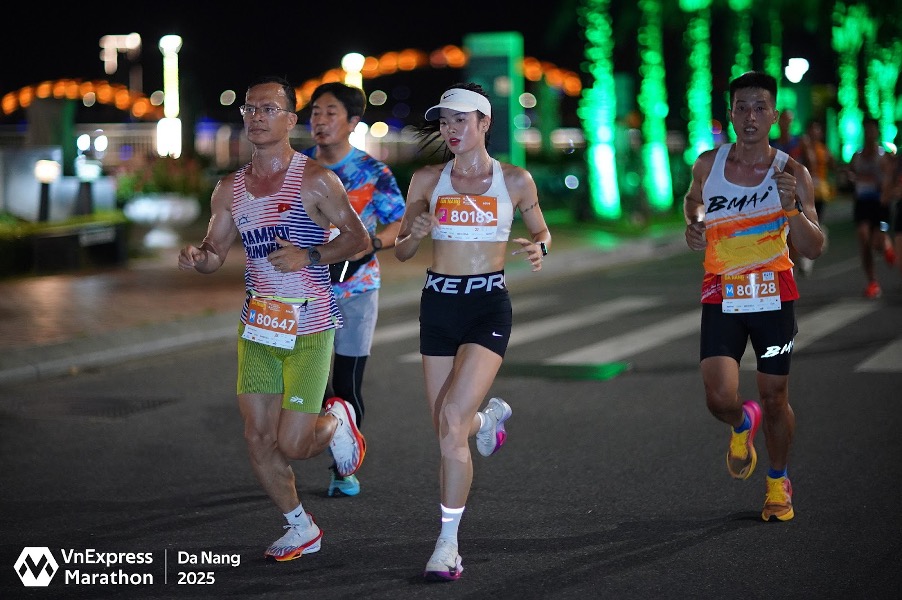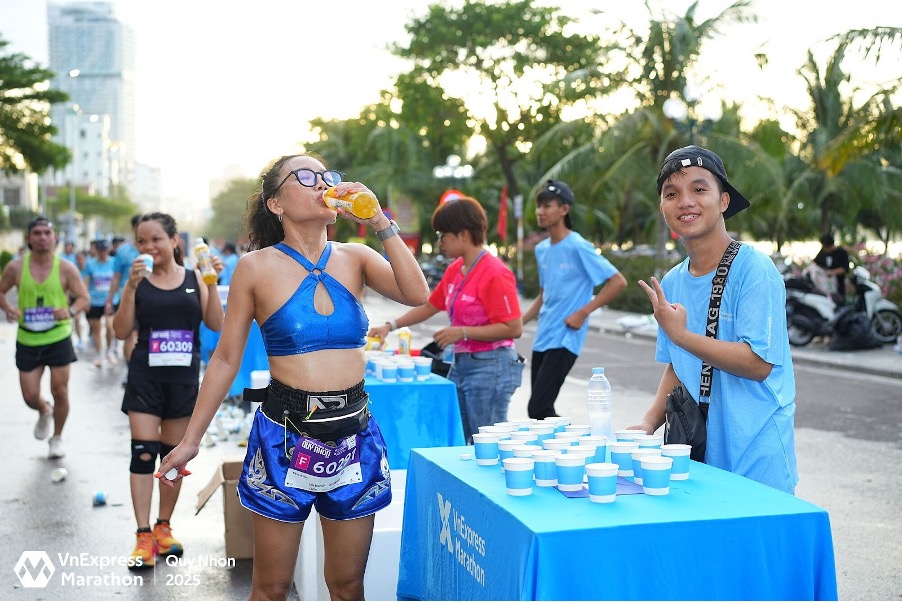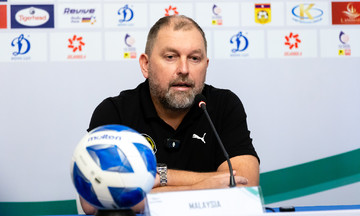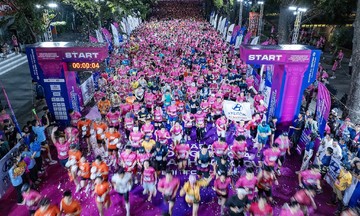In hot and humid conditions, especially during Vietnam's summer, runners often tire more quickly than in dry weather. This is because high humidity hinders sweat evaporation, making it difficult for the body to regulate its temperature. A rapid increase in body temperature leads to an elevated heart rate, causing runners to feel sluggish and struggle to maintain their desired pace. Without proper adaptation, runners risk overexertion and even exhaustion mid-workout or during a race.
 |
High humidity significantly impacts runners' performance. Photo: Pinterest |
Data from Strava reveals significant performance differences in varying humidity levels. A runner with an average pace of 5:47 at 27 degrees Celsius with 30% humidity experienced a slower pace of 6:22 when humidity rose to 70%. At humidity levels above 90%, the pace further decreased to around 6:55. These figures demonstrate how humidity affects running performance and overall experience. This is especially relevant for runners preparing for the VnExpress Marathon Can Tho on 14/9, given the Mekong Delta's characteristically high humidity and sweltering mornings.
Adjust your training plan
In high humidity, the body works harder to maintain a steady pace. Instead of trying to keep the same pace, runners should adjust their training plans to reduce the load. Switching from tempo runs to interval runs, or running for time rather than a fixed distance, are common adjustments.
This approach reduces stress on the cardiovascular system and limits the risk of overexertion. Coach Kaila DeRienzo in South Carolina, USA, recommends incorporating short walking breaks during training sessions. These breaks allow the body to adapt and recover breathing rhythm, instead of maintaining a continuously high pace.
Choose smart apparel
Humid air makes it harder for the body to release heat, so clothing choices can make a big difference. Runners should prioritize lightweight, loose-fitting, and moisture-wicking fabrics over moisture-retaining cotton. Light, airy colors will also provide more comfort in hot weather.
Accessories are also important: instead of a closed baseball cap, a visor can offer sun protection while allowing for ventilation. The right choices not only enhance comfort but also help runners avoid rapid increases in body temperature during runs.
 |
Runner Tran Duyen wearing a visor during the VnExpress Marathon Da Nang 2025. Photo: VnExpress Marathon |
Run indoors when necessary
When outdoor humidity is excessively high, runners are prone to experiencing abnormally high heart rates and early fatigue. On such days, a treadmill can be a safe solution to maintain training volume.
While lacking fresh air and scenic views, treadmills offer a controlled environment, reducing the risks of exhaustion and weather-related injuries. Runners can alternate between outdoor and indoor running to maintain their training routine while minimizing the negative effects of high humidity. This also helps maintain consistent training while preparing for races.
Cool down before running
A simple yet effective tip is to cool the body down before starting a run. A cool shower, soaking feet in ice water, or wearing cooling apparel can lower body temperature, allowing runners to start with a lower core temperature.
Research published in the Journal of Sports Medicine indicates that "pre-cooling" can improve performance in hot and humid conditions by slowing down the body's heating process. Additionally, runners should allow extra time for a gentle warm-up to gradually acclimate to the outside environment, rather than immediately starting at high intensity.
Replenish fluids and electrolytes
In high humidity, the body sweats profusely, but the sweat doesn't evaporate easily. This leads to rapid fluid and mineral loss, which can be hard to detect. A loss of just 2% of body water can significantly reduce performance. In addition to water, runners should consume electrolyte drinks containing sodium, potassium, magnesium, and calcium to maintain balance.
 |
At VnExpress Marathon events, electrolyte drinks are readily available at aid stations, helping runners replenish fluids and minerals promptly. Photo: VnExpress Marathon |
According to the American College of Sports Medicine, sodium intake should be 500–600 mg per hour of running and can increase to 1,000 mg for those who produce salty sweat. VnExpress Marathons provide electrolyte drinks at aid stations to help runners replenish fluids and minerals promptly.
Have a light pre-run snack
A light snack before a long or intense run in a humid environment can provide runners with quick energy and essential salts. Simple options like salted egg sandwiches, salted sesame rice, boiled sweet potatoes with salted sesame seeds, or bananas with salted roasted peanuts are good choices. These are easy-to-digest, rich in carbohydrates, and contain sodium to support electrolyte balance. However, individuals with blood pressure or kidney conditions should consult a doctor before increasing their salt intake. Proper snacking helps runners reduce the risk of fatigue when running in hot and humid conditions.
Hai Long
The inaugural VnExpress Marathon Can Tho will begin on the morning of 14/9. The route is planned to pass by Ben Ninh Kieu, the iconic Can Tho Bridge, riverside streets, and local residential areas. The race promises a unique experience, allowing runners to conquer the course while immersing themselves in the Mekong Delta's distinctive river life.
Readers can find news here.












